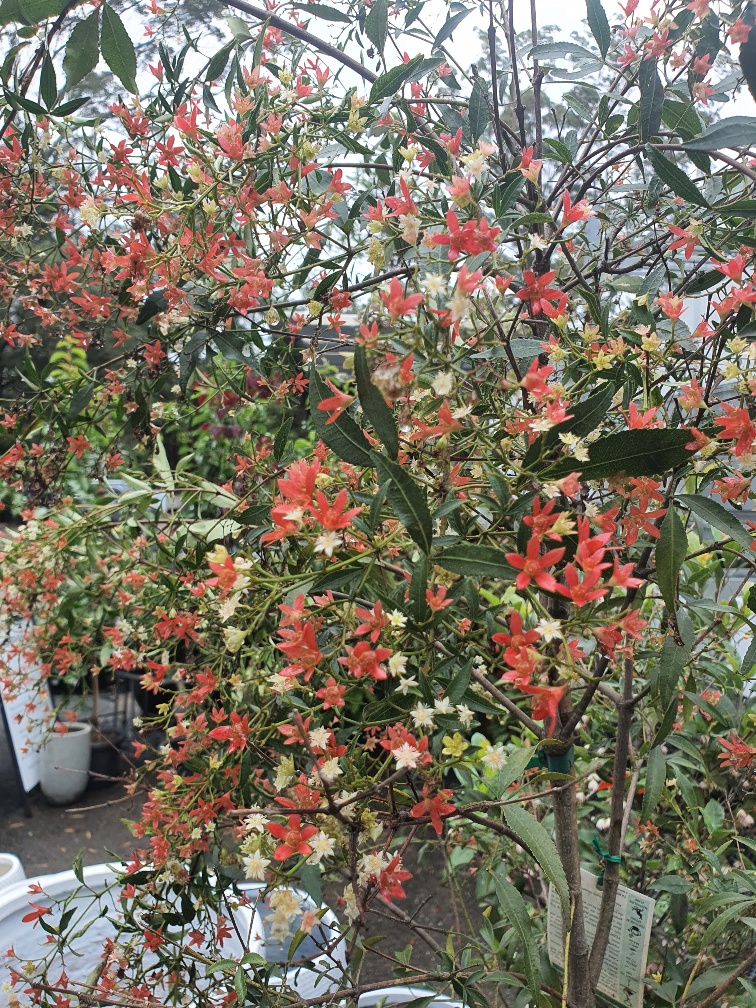
19 Dec Festive Plants
In Australia we have many symbolic species of plants that I always associate with Christmas. Some are truly Australian, and others follow the traditions of our northern hemisphere neighbours. The main symbolic plant of Christmas would have to be the Christmas Tree. There are many different stories as to how the Christmas Tree evolved to become the symbol of Christmas that it is today. For thousands of years branches of conifers were traditionally used to celebrate Pagan and Christian winter festivals. However the first written record of a Christmas Tree being bought in to the house and decorated at Christmas dates back to the 16th Century in Germany.
One of my favourite flowers for this time of year and something which is uniquely Australian is the NSW Christmas Bush. The flowers of this tree are actually the small white fluffy blooms which you see in the middle of Spring. They then go to seed and as the flowers start to dry out the sepals of the flowers then enlarge and turn a bright pink – orange colour usually in early December. It is the bunches of these sepals that florists sell as Christmas Bush.
Hydrangeas normally are looking at their best at this time of year.
The big mop topped varieties are my favourite, always reminding me of an old fashioned floral swimming cap. Available in a variety of colours and dependent on the pH of your soil they are always a long lasting good valued cut flower or look lovely planted in your garden.
Christmas Bells have a red bell-shaped flower with a narrow yellow margin. Naturally growing in heath land coastal areas, they are slow growing. As a cut flower they last for a long time in a vase.
Summer flowering Eucalyptus are normally in flower over the Christmas period. The grafted species of Eucalyptus ficifolia have large beautiful gum flowers with blooms usually in red, orange or yellow. They then give way to the large gum nuts that are a unique decoration on their own. The Poinsettia is another festive plant, a tradition we have inherited from our northern hemisphere neighbours. Poinsettia sold in Australia at this time of year have to be grown in green houses to promote the red colour. These are a great alternative to a bunch of flowers. The flowers on the poinsettias are actually the inconspicuous yellow blooms found at the centre of the plant surrounded by the red bracts (modified leaves) which the plant is known for. When selecting a Poinsettia make sure the yellow flowers at the centre are still intact and are still holding their shape to ensure you select a fresh plant with a long life ahead.



